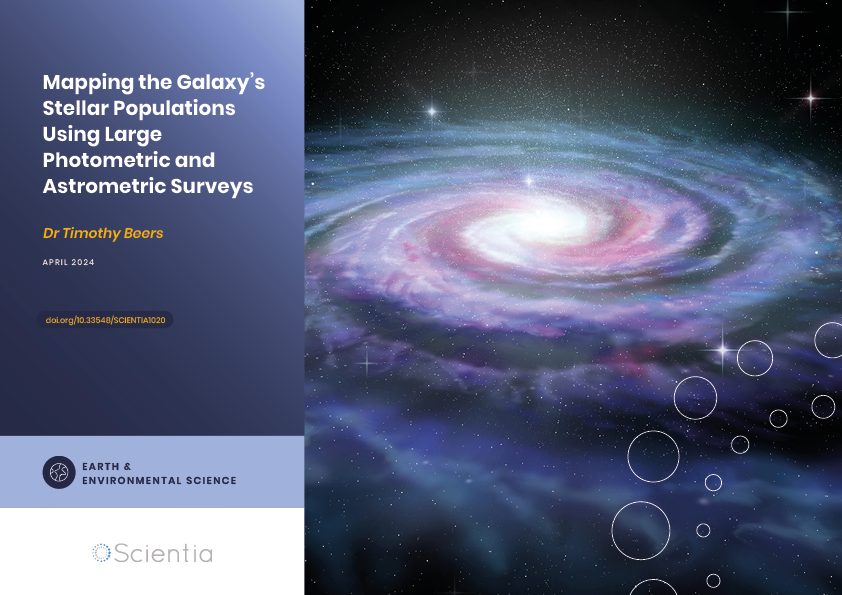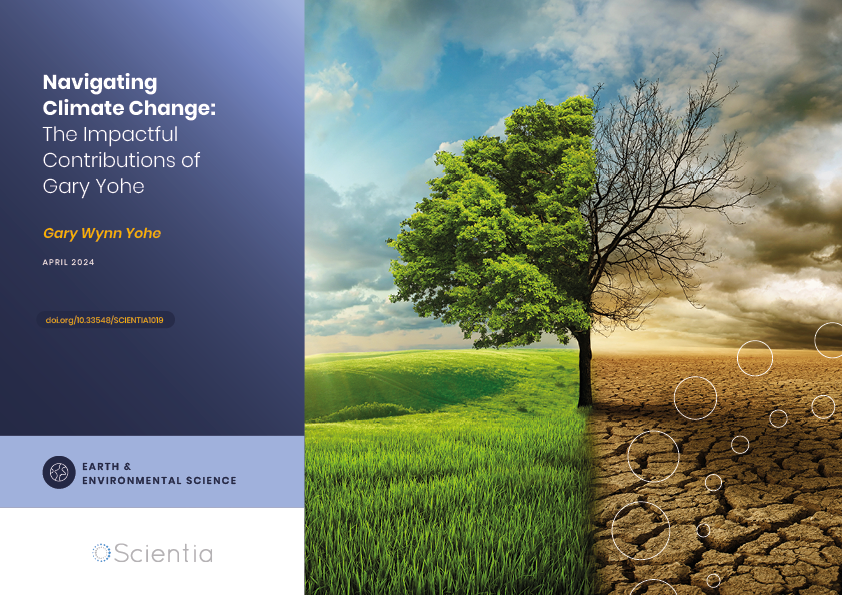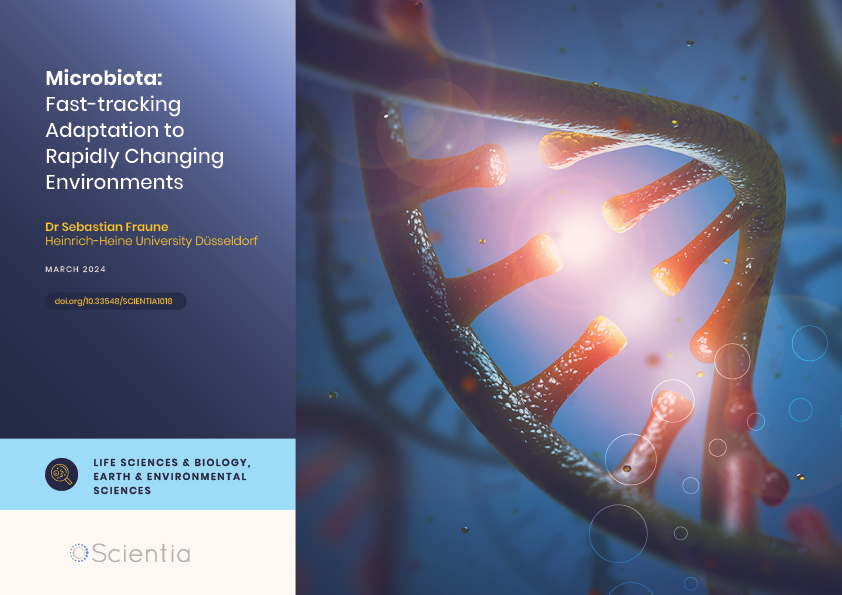Dr Robert H. Rainbird | Searching for Primary Evidence of Early Earth’s Atmospheric Evolution
What did Earth look like between one billion and two-and-a-half billion years ago? When did our atmosphere and oceans become oxygen-rich? Did oxygenation occur rapidly or during slow oscillations over hundreds of millions of years? These questions have been debated by scientists for decades because of their implications for the evolution of early life, and thus, our very understanding of life on Earth. Through their research, Dr Robert H. Rainbird and his team at the Geological Survey of Canada and Carleton University seek to answer these questions by investigating the ancient sedimentary rocks to the north of Lake Huron in Ontario.
The Earth, Billions of Years Ago
After forming from an accumulation of floating star debris, Earth began its earliest period as a barren rock circling the sun. The planet orbited the sun in this state for approximately one billion years before the first life forms are thought to have arisen – primitive microscopic organisms most similar to today’s bacteria.
However, Earth did not immediately become the blue and green planet we know soon after life sprung into existence. It would take another billion to two billion years before the atmosphere became oxygen-rich, and multicellular life filled the planet’s oceans and landmasses.
What the Earth looked like during this process of atmospheric and oceanic oxygenation – called the ‘Great Oxygenation Event’ (GOE) – has been the source of vigorous scientific debates over the last four decades. Scientists are not sure exactly when the GOE occurred, or how long the process took. This is due to the difficulties associated with studying and reconstructing the environments that existed between one and two-and-a-half billion years ago, from the evidence that has survived the ravages of time.
Was it a swift and irreversible change, such as a tipping point once the oxygen levels reached a certain level? Or did the changes in atmospheric oxygen take hundreds of millions of years to become a permanent and prominent fixture of the Earth, while the planet and its inhabitants changed and evolved alongside the process?
These questions have driven the career of research scientist, Dr Robert H. Rainbird from the Geological Survey of Canada and Carleton University. He has spent the past 40 years researching sedimentary layers (or strata) that were deposited during the earliest of the geological periods – the ‘Precambrian’ – which spanned the first four billion years of Earth’s 4.6-billion-year history.
Dr Rainbird’s research centres predominantly on sedimentary basins in Canada from the Proterozoic Eon (2.5–0.5 billion years ago). However, he has extended his research to sedimentary rocks of that age on continents that may have been attached to Canada during this time.
These sedimentary basins – filled by successive sedimentary strata and arranged into Groups and Supergroups depending on their thickness and extent – provide a record of the environments that existed while the sediments were being deposited. The sedimentology of the strata yields useful information about the climate, positions and movements of the planet’s landmasses, life that existed at the time through fossils, and the oceanic and atmospheric conditions. Dr Rainbird’s team also studies the sedimentary strata by analysing their chemical and biochemical components using advanced analytical techniques.

Lithified glacial till (called diamictite)
of the Gowganda Formation,
near Elliot Lake, Ontario.
Sedimentary Rocks Reflect Tectonic Processes
In their current research, Dr Rainbird and his team focus on a succession of sedimentary strata called the ‘Huronian Supergroup’ (‘Huronian’), in an area north of Lake Huron in Ontario, Canada. These rocks represent one of the most complete, best preserved, and most representative of its time period anywhere on Earth, and yet we still have a limited understanding of them. The Huronian is most exposed along the roadcuts and waterways of the area, and in drill cores provided to Dr Rainbird by mineral exploration companies searching for uranium and precious minerals.
By understanding the history of how and when sediments were deposited in these layers, Dr Rainbird’s team aims to relate the ‘plate tectonics’ – or movements of the Earth’s crust – during the period that led to the formation and break-up of the planet’s first supercontinent. This information is foundational for scientists to understand how the Earth’s climate has changed over time and how life began, evolved, and appeared and disappeared across the ages.
The team achieves this by establishing the age of tiny mineral (zircon) grains in sandstone, to determine the age of the rocks from which the sand grains were derived by weathering. If the source region of the zircon grains can be established, it can also tell us whether the sandstone was derived locally or from far away – giving us further clues about the proximity of tectonic processes acting at the time.
Ultimately, Dr Rainbird and his team plan to compare the tectonic processes recorded in the sedimentary basins of Canada with those recorded in basins of a similar age on other continents, to develop an integrated and global correlation of these processes. As such, they have studied sedimentary rocks from around two billion years of Earth’s history, with the aim of contributing to our understanding of what Earth looked like during this time.

Evidence for early oxygen – tiny grains of hematite (iron oxide-arrowed) outlining quartz sand grains from 2.3-billion-year-oldb sandstone. The hematite lends its pink colour to the rock outcropping shown in the image below.
The Great Oxygenation Event (GOE)
Dr Rainbird and his team are also looking at the Huronian for clues about Earth’s ancient atmosphere and climate. They have collected data from several seasons of field work to map the distribution of the sedimentary strata, and investigate the environmental conditions in which these layers were deposited.
By combining established techniques in field sedimentology with cutting-edge laboratory procedures, Dr Rainbird and his team can accurately date and chemically fingerprint the rocks. The team’s integrative approach is novel, as it has rarely been applied to this critical time period anywhere on Earth. This will allow the researchers to correlate these sedimentary layers and the environmental conditions present at the time of deposition more accurately than ever before.
The source of atmospheric oxygen is generally thought to be a result of photosynthesis. Through the early Precambrian – called the ‘Archean Eon’ – it appears that oxygen sinks, particularly in the oceans, far outweighed the sources of oxygen. Ultimately, this state shifted in favour of oxygen accumulation at some time beginning approximately 2.5 billion years ago. Recent studies have revealed that after the GOE, atmospheric oxygen rose briefly, then declined, and stayed at relatively low levels for more than a billion years. Gaining an understanding of the conditions over this period could provide clues about the drivers behind these oxygenation changes.
By applying their innovative approach to the Huronian, the researchers aim to evaluate whether the evidence relating to the GOE within the sediments truly reflects a transition from an oxygen-free to an oxygen-rich atmosphere. ‘With this approach, we can understand with much greater confidence when and why the oxygen-levels of the ocean and atmosphere varied through time, with its obvious consequences for early evolution of life on Earth,’ says Dr Rainbird.
Climate Change, Glaciations and Atmospheric Oxygenation
Sediments deposited during Earth’s history provide a record of periods of ‘glaciation’ – cooler periods when glaciers covered much of the planet’s surface. Dr Rainbird and his research team aim to use their findings to determine the timing and duration of three continent-scale glaciations preserved within the Huronian sedimentary strata. This could provide an opportunity to compare these ancient glaciations with more contemporary glaciations recorded elsewhere on Earth, contributing to our understanding of the climatic conditions during and between glaciations.
One of the big questions Dr Rainbird and his team is seeking to answer is: was the GOE an abrupt ‘event’ or a protracted ‘episode’ lasting hundreds of millions of years? If the former, Dr Rainbird may be able to link it with one or all of the three, possibly global glaciations, providing further clues about the nature of the oxygenation process. Comparisons with parallel studies from correlative sedimentary successions in other regions, such as the Transvaal Supergroup in South Africa, could inform possible linkages of the GOE with so-called ‘snowball Earth’ glaciations – during which the planet was almost entirely covered in ice.
Returning to the previous aims, Dr Rainbird’s team is also investigating whether tectonic changes established from the sedimentary record in the Huronian, and correlative basins such as the Transvaal, can be linked with the GOE.

Earth’s oldest redbeds – pink sandstone of the Lorrain Formation, near Ville Marie, Quebec.
Cautioning Future Efforts
Advancements in measuring the chemical composition of sedimentary deposits have progressed to a level that scientists are able to identify and measure anomalies in the ancient stratigraphic record with a high degree of accuracy. However, our understanding of the conditions and processes that give rise to such chemical anomalies has not kept pace with technological advancements. As such, scientists run the risk of misinterpreting findings in the sedimentary record.
Recognising this gap, much of Dr Rainbird’s current research focuses on establishing the environments during and after the sediments were deposited. This will allow researchers to determine whether chemical anomalies are a product of environmental conditions during deposition, or from chemical processes acting on the sediments after they were deposited.
Dr Rainbird’s current research will provide us with new and better understanding of Precambrian Earth evolution – encompassing planet-defining events such as the origin of life, the evolution of multi-celled organisms, the former configuration of landmasses, and fundamental global changes in the climate, atmosphere and oceans.
SHARE
DOWNLOAD E-BOOK
REFERENCE
https://doi.org/10.33548/SCIENTIA862
MEET THE RESEARCHER

Dr Robert H. Rainbird
Geological Survey of Canada
Ottawa, ON
Canada
Dr Robert Rainbird received his undergraduate and master’s degrees from Carleton University in Ottawa, Ontario, before earning his PhD in Geology from Western University in London, Ontario. In addition to his position as a Senior Research Scientist at the Geological Survey of Canada, Dr Rainbird is an Adjunct Professor in the Department of Earth Sciences at Carleton University, where he supervises several undergraduate and postgraduate student researchers. His research interests lie in sedimentology, stratigraphy and geochronology of Precambrian sedimentary basins, particularly those of the Proterozoic Eon in Canada. He also employs remotely sensed imagery as an aid for geological mapping of non-vegetated terrain, such as the Canadian Arctic. Dr Rainbird’s current research focuses on investigating the sedimentary evidence for initial oxygenation of the Earth’s atmosphere and the origin of gold in Proterozoic placer deposits.
CONTACT
E: rob.rainbird@canada.ca
W: https://earthsci.carleton.ca/people/adjunct-professors/robert-rainbird
KEY COLLABORATORS
Dr WJ Davis, Geological Survey of Canada
Dr Duane Petts, Geological Survey of Canada
Dr Chris Lawley, Geological Survey of Canada
Dr Michael Babechuk, Memorial University of Newfoundland
Dr Alessandro Ielpi, University of British Columbia
Nabil Shawwa, Carleton University
Thomas McLoughlin-Coleman, Carleton University
Dr James Mungall, Carleton University
FUNDING
Natural Sciences and Engineering Research Council (NSERC)
Department of Natural Resources, Canada (NRCan)


![]()

REPUBLISH OUR ARTICLES
We encourage all formats of sharing and republishing of our articles. Whether you want to host on your website, publication or blog, we welcome this. Find out more
Creative Commons Licence (CC BY 4.0)
This work is licensed under a Creative Commons Attribution 4.0 International License. 
What does this mean?
Share: You can copy and redistribute the material in any medium or format
Adapt: You can change, and build upon the material for any purpose, even commercially.
Credit: You must give appropriate credit, provide a link to the license, and indicate if changes were made.
SUBSCRIBE NOW
Follow Us
MORE ARTICLES YOU MAY LIKE
Dr Lifei Wang | Can Species Distribution Models Inform Us About Future Ecosystems?
The world is buzzing with news about how human activities and climate shifts are reshaping our ecosystems. Have you ever wondered how life will adapt to this rapidly changing world? Ecologists might be able to predict how different species will live in future using computer simulations. Dr Lifei Wang at the University of Toronto Scarborough investigates how different stimulations work under varying conditions to provide new insights into what may lie ahead.
Dr Timothy Beers | Mapping the Galaxy’s Stellar Populations Using Large Photometric and Astrometric Surveys
Astronomers often use spectroscopic (electromagnetic radiation) data and astrometric (motion and positional) data to develop working models describing our Galaxy. Dr Timothy Beers from the University of Notre Dame and his collaborators in Korea and China combined large photometric (visible light) surveys and astrometric data to create multidimensional maps of a large part of the Galaxy. By highlighting significant inhomogeneities in stellar-chemical compositions, motions, and spatial distributions, Dr Beers and his colleagues provide valuable insights into how we can advance our understanding of the formation and evolution of our Galaxy.
Professor Gary Yohe | Navigating Climate Change: The Impactful Contributions of Gary Yohe
Professor Gary Yohe is a distinguished environmental economist whose work has been pivotal in shaping our understanding of climate change impacts, adaptation strategies, and policy frameworks. His interdisciplinary approach combines economics with environmental science, offering nuanced insights into global warming and its multifaceted impacts on natural and human systems. Professor Yohe equips us with the knowledge and strategies needed to navigate the complex and pressing challenges posed by climate change.
Dr Sebastian Fraune | Microbiota: Fast-tracking Adaptation to Rapidly Changing Environments
As climate change continues at an unprecedented pace, the processes of natural selection and genetic mutation can no longer fully explain how some organisms adapt to their rapidly changing environments. Dr Sebastian Fraune from Heinrich-Heine University and an international team of researchers are the first to demonstrate a causal relationship between changes in the microbiome and changes in thermal tolerance. They propose that microbiota-mediated transgenerational acclimatisation can account for how animals adapt to their environments in much shorter periods of time than classical theory would predict.





